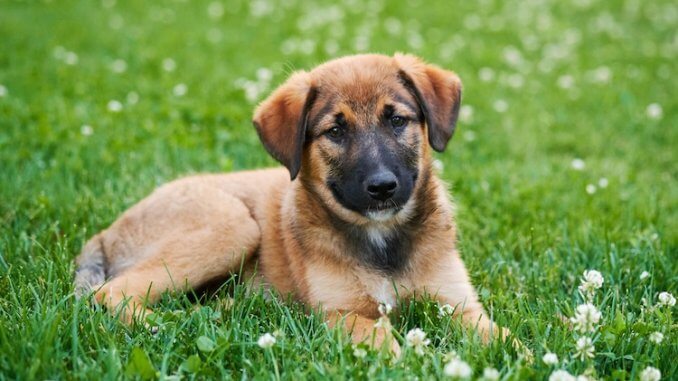
German shepherd training can begin as early as eight weeks, starting with name training, crate training, potty training, and bite inhibition. Socialization is also crucial during the first 16 weeks and involves exposing puppies to new sights, smells, and surroundings to help the dogs grow into confident adults.
German shepherds are easy to train because they are intelligent and eager to please, but they can be sensitive and require a gentle training approach.
TABLE OF CONTENTS
Training a German Shepherd Puppy
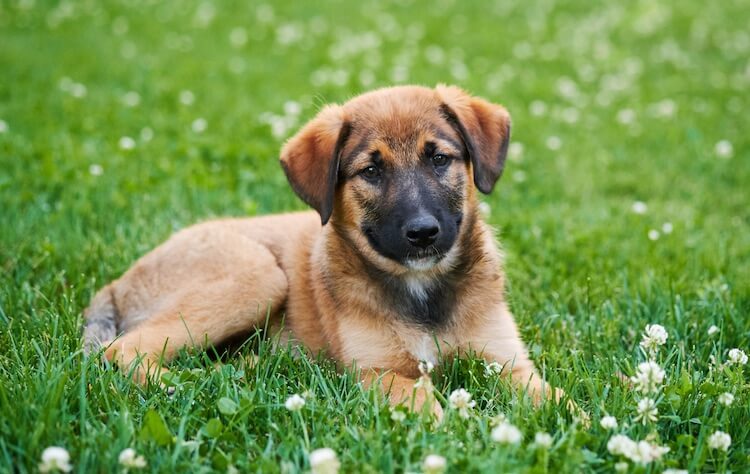
German shepherd puppies are easy to train because they’re open-minded and inquisitive, and early training helps the dogs become confident and obedient. Necessary supplies to train German shepherd puppies include high-value treats, a crate, and toys.
German shepherds can start training as soon as they are eight weeks old. This breed picks up new commands quickly, though the dogs are sometimes stubborn and require a firm leader that won’t budge on boundaries.
Name training, potty training, crate training, and bite inhibition can all be taught within the first 16 weeks of the German shepherd’s life because this is a critical socialization period in which it’s more receptive to new things and experiences. Always use positive reinforcement measures because punishment-based training can cause these dogs to become stressed, anxious, and aggressive.
Socialization
Socialization involves exposing puppies to new surroundings, people, and situations in a positive manner, which helps the dogs become confident adults capable of handling unfamiliar situations.
When introducing puppies to something new, make the experience positive with treats and praise. German shepherds should be particularly exposed to people and other animals to help curb the breed’s strong guarding instincts.
- Experiences: New environments (both indoors and outdoors), crowded and quiet areas, different weather conditions
- Sounds: Loud, common noises like doorbells, alarms, televisions, phones, vacuum cleaners, thunder, and fireworks
- People: People of different ethnicities, heights, ages, and genders, as well as varying attire like glasses, hats, and masks. Include joggers, cyclists, swimmers, and windsurfers
- Animals: Dogs and cats of all sizes and breeds, as well as birds, squirrels, and common farm animals
- Vehicles: Trucks, cars, motorbikes, garbage trucks, planes, and helicopters
- Objects: Household items such as the oven, toaster, vacuum cleaner, and hairdryer
- Textures: Grass, sand, gravel, wooden floor, carpet, and different types of sidewalks
- Grooming: Toothbrush, dog brush, nail clippers, water, and the bath
Puppy classes are a good way to expose German shepherds to other dogs and people in a controlled, safe environment.
Name Training
Name training should begin at eight weeks and be practiced daily until the German shepherd responds to its name consistently. It’s never too late to name train a dog, though the earlier you start the easier it is for the dog to pick up its name.
- Loudly say the German shepherd’s name in an excited, happy tone
- Once the puppy turns and makes eye contact, praise it with treats and verbal affirmation
- Repeat the process until the German shepherd performs the behavior reliably
- Vary the distance, environment, and amount of distractions present to enforce the behavior
- Gradually decrease the amount of praise and treats given
Teaching name recognition makes it easier to gain a German shepherd’s undivided attention, which is crucial for training, the dog’s personal safety, and preventing unwanted behaviors. Name training also strengthens your shared bond.
Potty Training
Puppies’ bladders aren’t fully developed until they’re six months old. Eight-week-old puppies can hold their bladders for up to three hours, on average, and typically need to urinate 30 minutes after they’ve eaten a meal.
- When the German shepherd puppy signals that it’s ready to go to the toilet – sniffing, whimpering, circling, or fidgeting – take it to a designated “potty area” outside
- As soon as the puppy starts to relieve itself, say “go potty” and reward the German shepherd once it finishes
- Play with the puppy for some time afterward in the yard to prevent it from forming negative associations with relieving itself (urinating shouldn’t mean the fun, outside time is over)
- Never punish accidents, because this teaches the puppy to hold its bladder and relieve itself when no one’s around
Take the puppy out regularly to reduce the chances of accidents, ideally in the morning, right before bed, and after meals, drinks, naps, or lengthy play sessions.
Potty training is a lengthy process and can take a dog several days, weeks, or even months to master. Be patient and consistent.
Follow the “month-plus-one rule” to determine for how long a puppy can comfortably go without a toilet break – a three-month-old puppy can last four hours, while a five-month-old puppy can last six hours. An adult German shepherd can hold its bladder for up to eight hours, but these long periods between potty breaks should be avoided to prevent kidney and bladder issues.
Crate Training
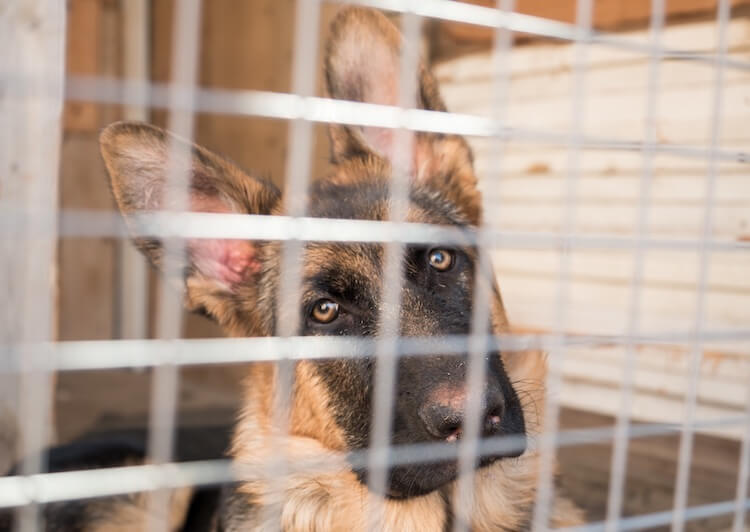
Crates can provide a homey, den-like environment where puppies feel safe, secure, and protected, and also help with potty training because dogs are reluctant to soil their living environment.
With appropriate training and use, a crate will only be a positive experience. A crate should never be regularly used for long periods or as a means to punish your German shepherd.
- Encourage the puppy to approach and explore the crate by placing toys around the crate
- When the puppy has spent some time near the crate, move the toys inside
- When the German shepherd enters, reward it with praise and treats
- As the dog’s confidence grows, begin feeding the dog meals inside the crate
- Slowly close the door for a few seconds when the German shepherd is eating to help the dog become accustomed to the crate being shut
- Gradually increase the time the crate is kept closed, making sure to give the puppy treats and praise while inside
- Once the German shepherd happily stays inside its crate (doesn’t whine, cry, or pant heavily), step away momentarily, then return and reward the puppy with treats. Repeat this step, gradually increasing the distance and duration
German Shepherd puppies should only be kept in a crate for up to three hours. Adults can stay in a crate for around eight hours, as long as they’re provided enough exercise and mental stimulation throughout the day.
Crate Training Tips
German shepherds are social, people-oriented dogs, so set up the crate in a busy living area to help them feel included. You should also make the crate a comfortable and enticing place – add cozy bedding, toys, chews, and a blanket covered in your scent.
Nervous dogs shouldn’t be forced inside a crate. Instead, entice these dogs further with high-value treats and praise.
If the German shepherd puppy shows signs of distress while in the crate, only return to the puppy once it’s calm so you don’t unintentionally reinforce its fear response.
Ensure the crate is an appropriate size – spacious enough to allow the puppy to move about comfortably, but small enough that there isn’t tons of excess space. Follow size guidelines when choosing a crate.
Biting
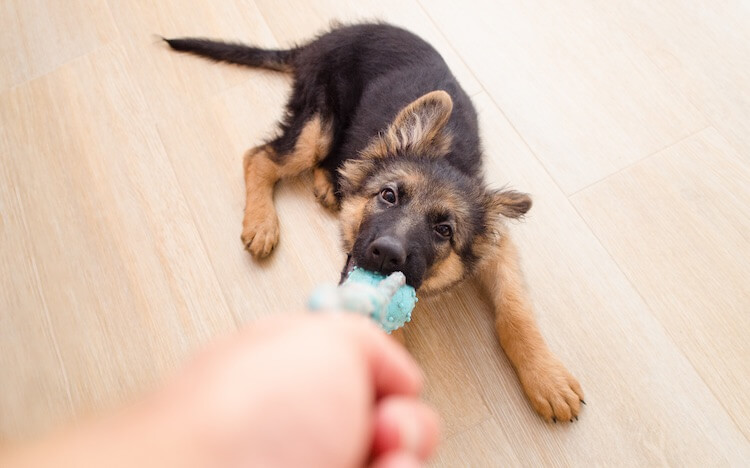
While biting is a natural behavior that allows puppies to learn about the world around them, they should learn to use their teeth gently so as not to hurt their owners or pet mates.
Early bite inhibition training curbs mouthiness and encourages gentle play by the time the puppy is seven months old.
Follow these tips to curb biting:
- Whenever the puppy bites your skin, make a distressing, high-pitched “ouch” noise
- If verbal deterrents aren’t effective, instead turn around and ignore the puppy
- Once the dog calms down and stops biting, reward it with treats and praise
- Be consistent and repetitive with training, and never yell or punish a puppy for biting
- If the German shepherd is chewing a personal belonging, take the item away and swap the item with a chew toy
How to Train an Adult German Shepherd
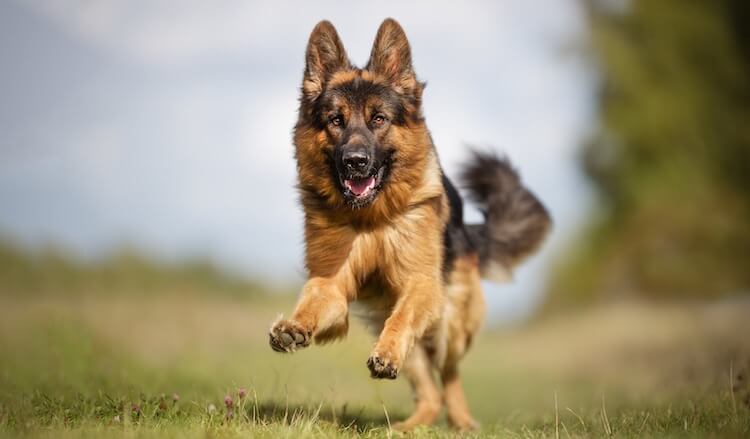
German shepherds that have undergone extensive training and socialization as puppies are easy to further train as adults. Adult dogs that are stubborn or have developed unwanted behaviors are still trainable if you have the right approach and mindset.
High-value treats are the most important training tool for adult German shepherds, and a clicker is useful for dealing with stubborn dogs by making training fun and interactive.
German Shepherd Obedience Training
While intelligent, German shepherds are sometimes stubborn and aren’t afraid to test set boundaries. Be firm and consistent when training this breed and always use positive reinforcement.
Training Commands
Useful training commands for the German shepherd include “sit,” “lie down,” “come,” “leave it,” and “stay.” Always fade the lure once the dog has mastered a new command.
- Sit: Hold a treat in front of the German shepherd’s nose, then move the treat over its head. The dog will have to move its head and body to keep its eyes on the treat, and will eventually end up in a natural sitting position. As soon as it’s sitting, give a treat and say the “sit” cue word
- Lie down: Ask your German shepherd to sit while holding a treat in front of its nose. Then move the treat downward to encourage the dog to lie down. Say “lie down” and reward once the dog is in the right position
- Come: Run away from the German shepherd, then attract its attention and tell it to “come” in an excited tone. Reward the dog with a treat and praise once it comes to your side. Gradually increase the distance
- Leave it: Hold a treat in a closed fist and let the German shepherd sniff and lick at your hand. Wait until the dog backs off, then say “leave it” and give it a treat and praise. Gradually increase the duration and place the treat in various places around the house, like on tables, chairs, and the floor
- Stay: Ask the German shepherd to lie down, then say “stay.” Wait a few seconds, then give the German shepherd a treat if it stays in the position without moving. Repeat the process, slowly increasing duration and distance
German Shepherd Training Tips
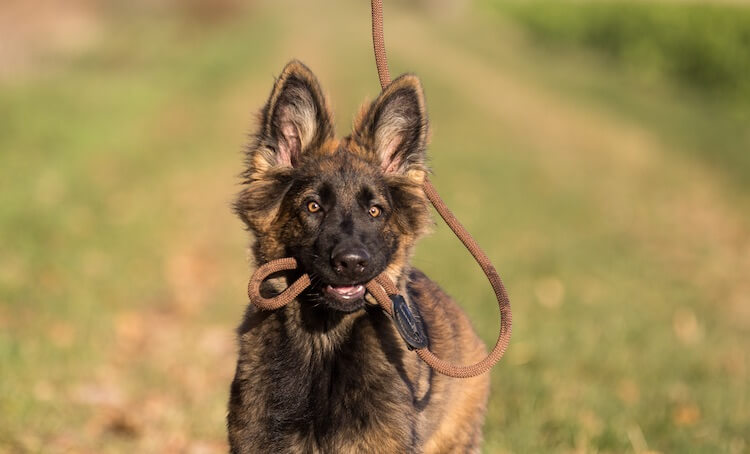
Effective German shepherd training tips include:
- Practice in a quiet, private area first, so your German shepherd won’t be overwhelmed
- Incorporate hand signals into training. Studies have shown dogs find body language easier to recognize than vocal commands
- Avoid training a German shepherd if it’s tired or hungry because the dog’s likely to become frustrated
- Keep training sessions brief, because puppies have short attention spans. Aim for 15 to 20 minutes of training per day, broken down into 5-minute sessions
- German shepherds are prone to separation anxiety, so you should help these dogs become accustomed to being alone from an early age. Leave German shepherds alone for short periods, then gradually increase the duration
- Consider training classes if you need extra support. Avoid dog trainers that use punishments, aversive measures like shock collars, or use terminology such as “alpha” and “dominance”
- Never yell, punish, or snap at German shepherds because they’re highly sensitive and easily become anxious, which can lead to aggression or unwanted behaviors like barking
- End training sessions with praise and a treat
While training German shepherds can be challenging, seeing them thrive and grow into well-behaved, confident dogs is worth all the time and effort involved. With appropriate care and training, German shepherds make wonderful companions that will brighten your days with their lovable and loyal personalities.
Keeping a Training Routine:
German shepherds are work-focused dogs that require vigorous daily training. Training strengthens family bonds and keeps these dogs mentally fit and well-behaved. Without regular training, German shepherds become stubborn and develop bad habits.
Teach German shepherds new commands regularly, and stick to one command per training session to prevent confusion. Once taught, commands should be reinforced on a daily basis. Always use intermittent rewarding to stop German shepherds from becoming treat dependent.
German Shepherd Training Summed Up
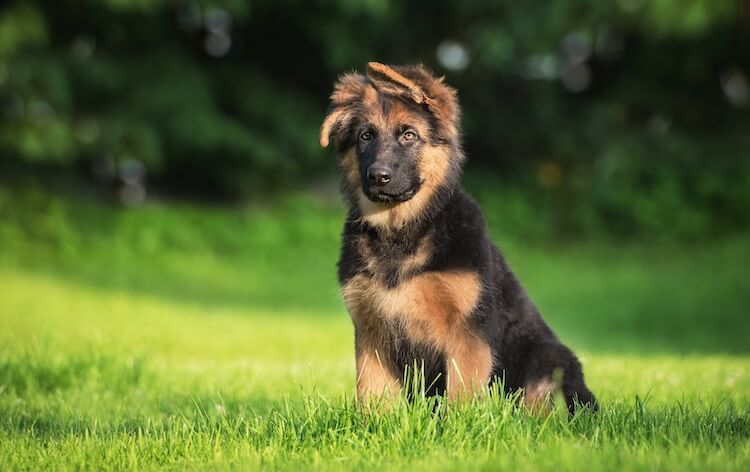
When you start training a german shepherd, as a priority, the things you teach should be:
- Potty training
- Not to bite
- Recall
- Loose leash walking
The other skills are very useful but can be taught at a later point if you need to prioritize; being a parent is hard work!
As much as German Shepherds are smart, much like other puppies, they are easily distracted. Keep all training sessions short and positive!
Each training session should last no more than a couple of minutes before having a little rest. Individuals will learn at different rates, so as long as you’re seeing improvement in the skill you’re trying to teach, you’re going in the right direction!
To help implement the training, learning of new skills, and socializing with other puppies and people, it’s a good idea to enroll your pup onto a positive reinforcement puppy school.
This will help him meet other dogs and people in a positive, controlled environment, and help build his confidence, whilst learning new skills too!
Just got a German Shepherd puppy? Need some training advice? Feel free to ask a question below.

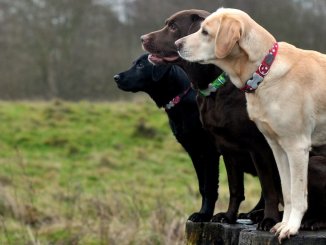
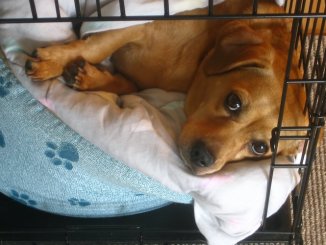
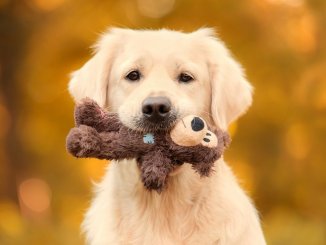
Be the first to comment